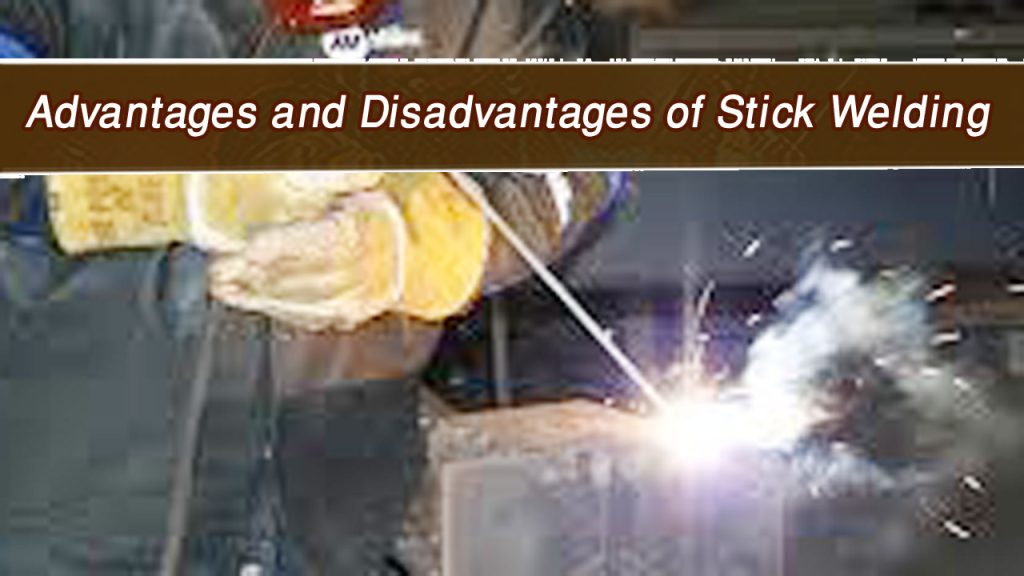Stick welding, also known as Shielded Metal Arc Welding (SMAW), is one of the most traditional and widely used welding processes in the industry. If you’re someone who’s interested in welding or considering it for a project, you’ve probably heard about stick welding.
But is it the right fit for your needs? Let me walk you through everything you need to know about the advantages and disadvantages of stick welding based on my own hands-on experience and research.

Image by codinter
What is Stick Welding?
Before diving into the pros and cons, let’s quickly break down what stick welding actually is. It’s a process where a flux-coated electrode (the “stick”) is used to join metals.
The heat generated by the electric arc melts both the electrode and the base material, creating a weld. The flux coating forms a protective gas shield around the weld to keep out impurities.
Stick welding is versatile, cost-effective, and easy to use for both professionals and hobbyists, but it comes with its challenges too. Let’s explore this in detail.
Advantages of Stick Welding
Stick welding has stood the test of time for good reasons. It offers several benefits that make it a popular choice in various industries.
Versatility Across Materials
One of the standout advantages of stick welding is its ability to work with different metals. You can weld steel, stainless steel, cast iron, and even some non-ferrous materials. This makes it an excellent choice for projects that involve multiple types of metals.
Whether you’re fixing a rusty gate or working on heavy machinery, stick welding is up for the task. Plus, the wide variety of electrodes available means you can customize the process to suit your needs.
Portability
Stick welding machines are compact and lightweight, making them easy to transport. Unlike other welding processes that might require heavy equipment or gas tanks, stick welding can be done just about anywhere with a power source.
This portability is particularly useful for outdoor or remote work, such as farm repairs, pipeline welding, or construction projects.
Cost-Effective
If you’re budget-conscious, stick welding is a great option. The equipment is relatively affordable compared to other welding methods like MIG or TIG. Additionally, you don’t need expensive shielding gas since the flux coating on the electrode provides protection.
For beginners or small-scale operations, this cost-effectiveness can be a game-changer.
Works Well in Outdoor Conditions
Stick welding excels in outdoor environments where other methods might struggle. The flux coating protects the weld from wind, rain, and other elements, ensuring a clean and strong bond.
This makes stick welding ideal for fieldwork, construction sites, or any project that requires welding under less-than-perfect conditions.
Simple Setup
Unlike more complex welding methods, stick welding doesn’t require a steep learning curve or elaborate setup. You don’t need external shielding gas, and the equipment is straightforward to operate.
For someone just getting started, this simplicity is a big plus. You can focus on learning the technique rather than worrying about complicated settings.
Good for Thick Materials
If you’re working with thick metals, stick welding is highly effective. It penetrates deeply and creates strong welds, making it a go-to option for heavy-duty applications like construction, shipbuilding, or structural repairs.
Disadvantages of Stick Welding
While stick welding has plenty of perks, it’s not without its downsides. Let’s take a closer look at some of the challenges you might face with this process.
Not Ideal for Thin Materials
Stick welding struggles with thin metals. The process generates a lot of heat, which can easily burn through or warp delicate materials. If your project involves sheet metal or intricate designs, you might want to consider other welding methods like TIG.
Spatter and Slag Removal
Stick welding tends to produce a lot of spatter and slag, which can make the finished weld less visually appealing. You’ll need to spend extra time cleaning and grinding the weld to achieve a smooth finish.
For projects where aesthetics are crucial, this extra effort can be a drawback.
Skill and Technique
While the setup is simple, mastering stick welding requires practice and skill. Maintaining a steady arc length, proper electrode angle, and consistent travel speed can be challenging for beginners.
If you’re new to welding, expect a learning curve before you achieve consistently strong and clean welds.
Limited Speed
Stick welding isn’t the fastest welding process out there. The need to replace electrodes frequently and clean slag slows down the workflow compared to MIG or flux-cored welding.
For large-scale projects with tight deadlines, this slower pace can be a disadvantage.
Heat and Warping
Stick welding generates a lot of heat, which can cause warping or distortion in certain materials. This is especially true if you’re working with heat-sensitive metals or trying to weld close to other components that could be damaged by excessive heat.
Electrode Consumption
The electrodes in stick welding get used up quickly, meaning you’ll need to keep replacing them. This can interrupt the flow of your work and add to the overall cost of materials.
Comparing the Pros and Cons of Stick Welding
Here’s a quick table to summarize the advantages and disadvantages of stick welding:
| Advantages | Disadvantages |
|---|---|
| Works with various materials | Struggles with thin materials |
| Portable and easy to transport | Produces spatter and slag |
| Cost-effective | Requires skill and practice |
| Performs well outdoors | Slower than other methods |
| Simple setup | Heat can cause warping |
| Good for thick materials | High electrode consumption |
Is Stick Welding Right for You?
The decision to use stick welding ultimately depends on your specific needs and circumstances. If you value portability, affordability, and versatility, stick welding is a solid choice. However, if you’re working with thin materials or require a flawless finish, you might want to explore other welding methods.
For me, stick welding has been a reliable option for outdoor projects and heavy-duty repairs. But I’ve also had my fair share of frustration with slag removal and maintaining a consistent arc. It’s all about weighing the pros and cons to see if it aligns with your goals.
FAQs
Can stick welding be used on aluminum?
Yes, but it’s not ideal. Stick welding aluminum requires special electrodes and can be challenging due to the metal’s properties. MIG or TIG welding is usually a better option for aluminum.
What is the best electrode for beginners?
A 6013 electrode is often recommended for beginners because it’s easy to use and produces a stable arc.
Is stick welding stronger than MIG welding?
Stick welding can produce strong welds, but the strength depends on the materials, technique, and application. For thick metals, stick welding often has an edge.
Why does stick welding create so much spatter?
The spatter is caused by the flux coating on the electrode, which burns off during the welding process. Proper technique and electrode choice can help reduce spatter.
Can I use stick welding indoors?
Yes, but ensure proper ventilation to avoid inhaling harmful fumes generated by the flux.
Conclusion
Stick welding is a versatile and cost-effective welding method that has earned its place as a staple in the industry. It’s perfect for outdoor work, thick materials, and situations where portability is key. It’s not without its challenges, like spatter, slag removal, and difficulty with thin metals.
In my experience, stick welding is a fantastic skill to have, especially if you’re tackling repairs or heavy-duty projects. But it’s essential to understand its limitations and practice your technique to get the best results.
If you’re a beginner or a seasoned welder, stick welding offers plenty of opportunities to hone your craft and create strong, reliable welds. Give it a try and see how it fits into your toolkit!

Endow Russel the owner chief editor of giftendow.com . I am a mechanical engineer and assign to an local firm with much experience in welding and industrial equipment.

